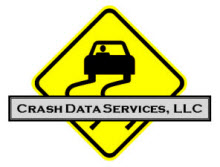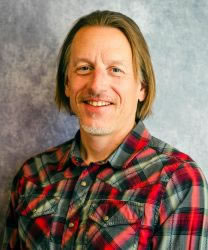While the information recorded on event data recorders (EDRs), commonly referred to as vehicle black boxes, is tremendously helpful in determining how a traffic accident occurred and in improving safety, it was not until recently that EDR data was legally challenged in Illinois and ultimately accepted.
The acceptance of EDR data in Illinois stemmed from a car accident in Woodford County on November 6th, 1996. Danielle Bachman, driving a 1996 Chevrolet Cavalier, crossed onto the wrong side of the road and crashed head-on with a delivery van. The cause of the crash was determined to be loss of control on Bachman's part.
In June 1998, General Motors Corporation recalled all 1996 Chevrolet Cavaliers because of flawed calibration of vehicle sensing and diagnostic modules (SDMs), GM's version of an airbag control module1. Due to improper calibration, some SDMs, manufactured by Delphi Automotive Systems and Delco Electronic Systems, inadvertently deployed the airbags during low speed crashes or when a relatively small object, such as a stone, struck the floor pan.
Bachman, and her mother, filed a lawsuit2 in June 1998, alleging that the SDM in Bachman's 1996 Chevrolet Cavalier was defective, and it was an unintended deployment of the vehicle's airbags that caused the crash. In their complaint, Bachman and her mother noted GM's recall and claimed that the SDM in Bachman's car was hypersensitive to road surfaces on the day of the crash.
In September 2000, Bachman and her mother filed a motion to bar all testimony and evidence pertaining to the EDR crash data the defense's experts planned to submit. In October 2000, in response to Bachman and her mother's motion, the defendants requested a Frye hearing. In determining the acceptance of expert testimony with regard to any technology, Illinois generally follows the Frye standard.
The Frye standard was formed after Frye v. United States3, a District of Columbia Circuit Court case from 1923, which addressed the admissibility of polygraph evidence. Under the Frye standard, it is not enough that an expert testify a particular technique is sound. Frye creates a requirement that the scientific technique must be "generally accepted" by the relevant scientific community. In addition to the Frye standard, the process of assessing whether a technology is new or novel was set forth in Harris v Cropmate4.
In most jurisdictions, including federal courts, the Frye standard has since been superseded by the Daubert Standard. The Daubert standard was derived from the 1993 Supreme Court case Daubert v. Merrell Dow Pharmaceuticals5. This more recent standard rejects the need for "general acceptance" and calls for an independent judicial assessment of reliability6. Under Daubert, the courts often consider if a technology has been peer reviewed and validated in addition to being commonly accepted7.
During the Frye hearing for the Bachman case, on behalf of the defendants, engineers for both Delphi and General Motors presented evidence that airbag control modules, like SDMs, are commonly used throughout the automotive industry. Engineers went on to explain how the devices control airbag deployment and permanently record information within their EDRs. The defense's experts testified that based on scientific testing by automobile manufacturers, the National Highway Traffic Safety Administration (NHTSA), Vetronix, the Insurance Institute for Highway Safety (IIHS), and Canadian law enforcement, SDMs were known to accurately and reliably record crash data within their EDRs.
Based on the evidence presented, the trial court ruled that the method of recording data within the EDR of an SDM was not new or novel. The court also acknowledged that EDR crash data was generally accepted within the relevant scientific community. Therefore, the Frye standard was met and the EDR data was consequently allowed at trial.
During the November 2000 jury trial, Bachman testified that her driver airbag had deployed "out of the blue" and that the unwarranted deployment rendered her unconscious before the crash with the delivery van. The defendants offered expert testimony and provided recorded crash data from the EDR contained within the SDM of Bachman's vehicle. Contrary to Bachman's testimony, the defendants' experts concluded that the SDM in Bachman's vehicle had not malfunctioned and the vehicle deployed the airbags as a result of the collision with the delivery van. The trial court jury ultimately returned a verdict in favor of the defendants and against Bachman and her mother.
In 2002, Bachman and her mother filed an appeal heard by the 4th District Appellate Court of Illinois8. As the primary basis for appeal, Bachman and her mother argued that the trial court erred in its denial of their motion in limine, which would have excluded the EDR evidence and related opinion testimony.
The appellate court disagreed with Bachman. The trial court's decision to allow the EDR evidence was affirmed. In the appellate court's opinion, EDR technology was not new or novel and was generally accepted within its respective field. Thus, the Frye standard had been appropriately applied with regard to EDR technology and legal precedence was set in Illinois.
1National Highway Traffic Safety Administration (1998) Defect and Noncompliance Notice (Part 573) Assigned Recall No. 98V-146.
2Bachman, et al, v. General Motors Corp., Uftring Chevrolet-Oldsmobile, Delphi Automotive Systems and Delco Electronics Systems, Ill 98L21 (1998).
3Frye v. United States, 293 F. 1013 (D.C. Cir. 1923).
4Harris v Cropmate, 302 Ill App 3d 364, 368-75, 706 N.E. 2d 55, 60-65 (1999).
5Daubert v. Merrell Dow Pharmaceuticals, 509 U.S. 579 (1993).
6Dixon, Lloyd & Gill, Brian (2001) Changes in the Standards for Admitting Expert Evidence in Federal Civil Cases Since the Daubert Decision. Santa Monica, CA: The Rand Institute for Civil Justice.
7Jones, Graham R. (2002) President's Editorial � The Changing Practice of Forensic Science. West Conshohocken, PA: Journal of Forensic Science.
8Bachman, et al, v. General Motors Corp., Uftring Chevrolet-Oldsmobile, Delphi Automotive Systems and Delco Electronics Systems, Ill App 4d, No. 4-01-0237 (2002).
DO NOT REPRODUCE WITHOUT WRITTEN PERMISSION BY AUTHOR.











